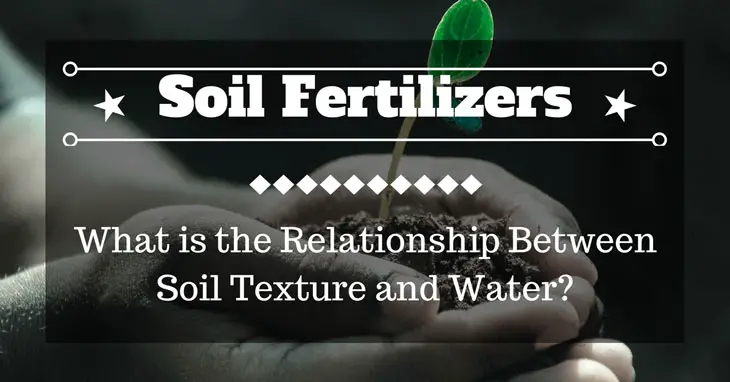What is the Relationship Between Soil Texture and Water?
So what is the relationship between soil texture and water? Many experienced gardeners may already have some ideas about it, but I would like to go in-depth on this subject as your understanding could have a significant impact in the type of soil to choose and how much you water the plants.
More...
Before we could discuss what is the relationship between soil texture and water, it would be good to define some important terms and phrases first and answer some of the basic questions that relate to soil texture.
Soil – Soil is a porous medium composed of organic matter, minerals, water and even gases. It comes in a wide variety of texture.
Soil texture – It is the composition of the soil as a combination of small (clay), medium (silt) and large (sand) particles. For instance, if you have a coarse soil, it could be a sand or loamy sand soil. The more large particles are present in the soil, the coarser will be its texture.
The proper sizing of the particles are as follows:
Different types of soil texture:
If you are interested to know the soil texture in your garden, you can follow the DIY instruction on Today’s Homeowner website.
Soil structure – this is the arrangement of soil particles, namely sand, silt and clay into a unit called aggregates. The aggregates can be friable or loose, or they may form uniform patterns. These can give the soil its overall structure.
Soil porosity – the soil has “micropores” and it refers to the space between soil particles which may consist of varying amounts of water and air. The porosity of the soil depends on its structure and texture. For instance, fine soil has small but numerous pores compared to coarse soil. Coarse soil has large pores but fewer pores. Additionally, small pores can hold water tighter.
Water holding capacity – ability of the soil to hold water. This information is useful for crop selection and irrigation scheduling.
Depending on the soil texture, their water holding capacity in inches per foot of soil are as follows:
What is the relationship between soil texture and water?
Soil texture is important because it controls how well the soil can hold water and absorb it. The water infiltrates the soil through large pores called “micropores” which are created by microorganisms, plant roots, and physical processes like thawing, freezing and drying.
The micropores affect the water holding capacity of the soil. Imagine putting marbles on a table and pouring water over it. The marbles won’t hold the water. Now, imagine pouring water through a fine sponge. It will absorb and hold water until its pores are filled.
In summary, the ability of the soil to absorb and retain water is hugely dependent on its texture. If the soil is coarse because of its large particle, there will not be enough surface area that can hold much water. At most, sandy or coarse soil can only hold up to two inches of water. In contrast, the finer the soil is, the better is its water absorption and retention capacity. Fine-textured soil can hold four inches of water.
It is important to note though that while clay has the highest capacity to hold water, its fine micropores hold the water very tightly that the plants will have difficulty in extracting it. Silt and loamy soil, on the other hand, can hold a significant amount of water which are readily available for most plants to use.
Conclusion
Soil is a valuable resource as it can support plant life. Water has also a significant role in growing plants. Knowing what is the relationship between soil texture and water is important as it can affect management decisions in terms of the type of crops to plant in your garden, how much irrigation you need, and when to do it. Understanding the type and texture of soil in your garden is foremost if you want to grow healthy plants and reap a good harvest.
References
Did you find this article useful? If you want to share your thoughts, please feel free to leave a comment below. Also, don’t forget to share this article with your friends and fellow gardeners.

